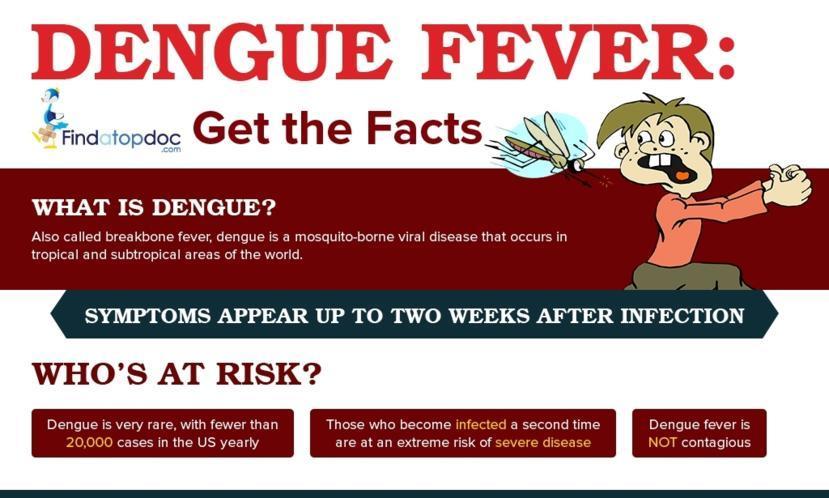What Causes Dengue Fever?
The viral origins of Dengue fever and its accelerated transmission through insects vectors

Dengue fever is a disease originating from four members of the Flaviviridae family of viruses. Identified as Dengue 1 through 4, these pathogens are called RNA viruses because their genetic nucleus is made up of ribonucleic acid or RNA. A fifth strain of the virus was discovered in 2013, adding to the burden of scientists struggling to find a counteracting vaccine. The viruses are very similar to each other, but are organically different because they produce different kinds of antigens or proteins that trigger the human body to produce antibodies.
Environmental factors that influence Dengue transmission
The Dengue virus originated in the jungles of the tropical belt covering the globe, and later was transmitted to humans in distant lands through insect vectors. Though South and Central America, Africa and South-East Asia are severely affected, incidents of Dengue infection in the US are sporadic, and re-entry to the country having visited one of these places is problematic at best.
The mechanism by which Dengue establishes a foothold
The main method of transfer of the virus is through insect vectors. The two subspecies, Aegypti and Albopictus mosquitoes, bear the virus in droplets of saliva which are injected into humans through skin pricks. In humans, the virus is known to incubate for seven to fourteen days before producing severe symptoms.
The mosquito is the connecting factor completing the virus’s life cycle
Curiously, only females of the species transfer the virus to humans. In a typical life cycle, the virus requires mosquitoes to spread the infection to humans for incubation. Mosquito bites are less common during the day when humans are on the move, and more frequent in the night when people rest and mosquito larvae hatch in tepid and stagnant pools of water. Mosquito breeding occurs only in stagnant pools of water and not in the turbulence of running streams or rivers. The dormant carrier larvae are known to resist extreme climatic conditions for several months. The virus also survives in dried up blood stains for up to 60 days.
The mechanism of the infectious mosquito bite
The mechanism of transferring the infection from mosquito to humans is through the mosquito bite. Unlike the male mosquito that feeds off nectar, the female mosquito requires blood to grow its eggs. It inserts a straw-like appendage that penetrates the human skin and squirts an anticoagulant into the blood vessels to deactivate clotting substances. The mosquito then sucks blood in the same manner as we suck on a straw. The virus is passed on through droplets of mosquito saliva into the human bloodstream before the body can physically react to the threat.
The simian-mosquito-human cycle of viral infection and spreading
The infection spreads worldwide in two prominent stages. The first is in a jungle setting through primates like apes and monkeys that get bitten by mosquitoes, becoming carriers of the virus. The next stage is the urban infiltration of the virus through airborne mosquitoes. The simian-mosquito-human viral life cycle is now repeated in many tropical and subtropical zones.
How it affects us
In humans, Dengue appears in three distinct forms - the initial Dengue fever, the severe symptomatic distress called Dengue shock syndrome (DSS) and the extreme scenario of Dengue hemorrhagic fever (DHF) that usually ends in profuse bleeding and death.
It is now understood that five varieties of the Dengue virus are active in infecting humans. Overcoming one infection usually guarantees lifelong immunity to further infections of that particular strain. The same person however remains at risk of catching a secondary infection from the remaining strains at any time. The different strains of almost identical viruses are a huge challenge in discovering a vaccine that could neutralize the life-threatening infection.













